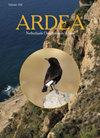To See, Hear and Speak: How Counts of Birds in Individual Trees Help Address the Environmental Causes of the Sahel
IF 0.8
4区 生物学
Q3 ORNITHOLOGY
引用次数: 0
Abstract
the three ‘wise monkeys’ originating in Japanese and Chinese philosophical traditions going back at least 1000 years. Mizaru was the monkey that covered its eyes, Kikazaru plugged both ears with fingers, and Iwazaru held its mouth shut with a clasping hand. Together they “saw no evil, heard no evil and spoke no evil”, a wonderful ambiguity, because is it really a virtue to withdraw? Or is it a virtue to see and hear attentively, and thus sense the state of the world around us; and then speak about it? This special issue of ARDEA is filled with papers painstakingly reporting the work of a small and dedicated team who set out to map the birds across the entire Sahel (an area the size of the USA!). Although mapping is inherently biased by the knowledge and cognitive facilities, as well as the interests, of the mappers (Malavasi 2020), within the limits of their sensibilities, and negotiating serious political and safety realities, the team tried to do this in temporally and spatially unbiased and methodologically robust and repeatable ways. The way that single trees and bushes disperse across the landscape of the Sahel, rather than connect-up into a dense forest, inspired a mapping approach that is both brilliant and unique. Rather than taking ‘an area’ as the spatial unit to measure bird abundance, the team began with ‘individual trees’ (Figure 1), with the plots in which these trees occurred being carefully pre-selected along trajectories that could be travelled “easily” (i.e. within the reach of a 4×4 vehicle). In their ensemble, the effort would give unbiased measurements of birds ánd trees across the entire Sahel, from Senegal in the west to Ethiopia in the east. This design also enabled assessments of the consequences of the steep latitudinal gradients in rainfall as one moves south from the Sahara sands towards the Sudan forests across 1000 km, and sometimes less. Theunis Piersma & El-Hacen M. El-Hacen《看、听、说:单个树上的鸟类计数如何帮助解决萨赫勒地区的环境问题》
这三只“聪明的猴子”起源于至少1000年前的日本和中国哲学传统。Mizaru是一只捂着眼睛的猴子,Kikazaru用手指堵住了两只耳朵,Iwazaru用紧握的手捂住了它的嘴。他们一起“看不见恶,听不见恶,说不出恶”,这是一种奇妙的模糊,因为退缩真的是一种美德吗?或者,用心地观察和倾听,从而感知我们周围世界的状态,这是一种美德吗?然后谈论它?这期《ARDEA》特刊充满了一个小而专注的团队的辛勤工作,他们开始绘制整个萨赫勒地区(一个面积与美国相当的地区!)的鸟类地图。尽管制图本身就受到制图者的知识和认知设施以及兴趣的影响(Malavasi 2020),但在他们的情感范围内,并考虑到严重的政治和安全现实,该团队试图以时间和空间上的无偏倚、方法上的稳健和可重复的方式来完成这项工作。单一的树木和灌木分散在萨赫勒地区的景观中,而不是连接成茂密的森林,这种方式激发了一种既聪明又独特的测绘方法。该团队没有以“一个区域”作为测量鸟类数量的空间单位,而是从“单个树木”开始(图1),这些树木生长的地块沿着“容易”行驶的轨迹(即在4×4车辆可及的范围内)经过仔细的预先选择。在他们的团队中,这项工作将对整个萨赫勒地区(从西部的塞内加尔到东部的埃塞俄比亚)的鸟类ánd树木进行公正的测量。这种设计还可以评估从撒哈拉沙漠向南移动1000公里(有时更短)到苏丹森林时,降雨量的陡峭纬度梯度的后果。Piersma & el - hazen
本文章由计算机程序翻译,如有差异,请以英文原文为准。
求助全文
约1分钟内获得全文
求助全文
来源期刊

Ardea
生物-鸟类学
CiteScore
2.10
自引率
0.00%
发文量
49
审稿时长
>12 weeks
期刊介绍:
Ardea is the scientific journal of the Netherlands Ornithologists'' Union, and is published since 1912. The journal welcomes manuscripts reporting significant new findings in ornithology, in particular those covering the ecology, life history, and evolution of birds, and including sound descriptive work. Ardea publishes Original research papers, Short notes and Book reviews. In addition to the regular three issues per year, Ardea publishes specials that contain conference or workshop proceedings (produced on request).
 求助内容:
求助内容: 应助结果提醒方式:
应助结果提醒方式:


